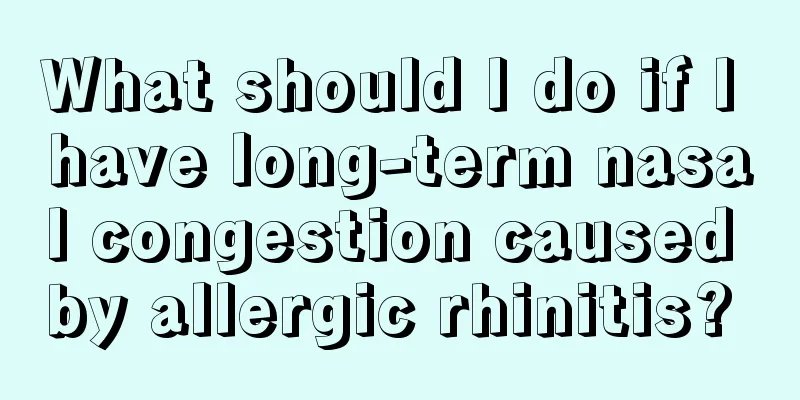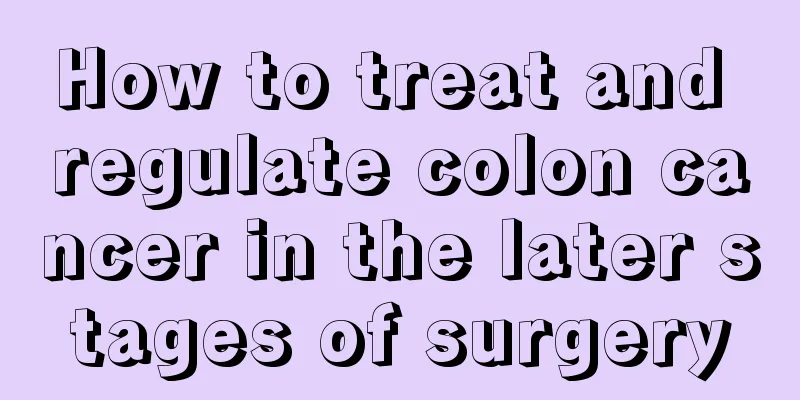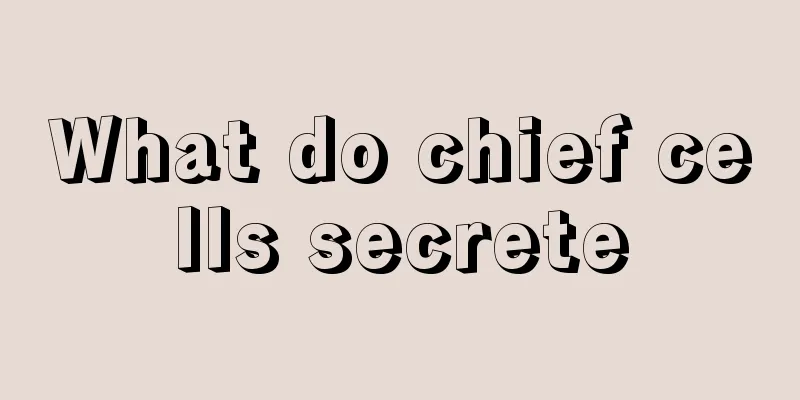What should I do if I have long-term nasal congestion caused by allergic rhinitis?

|
Many people have suffered from allergic rhinitis. Rhinitis may not seem very serious, but the nasal congestion caused by allergic rhinitis and the fact that the nose is easily infected may have adverse effects on our body. When people develop allergic rhinitis, they may have to receive certain treatments, which means taking medication, cleaning the nose every day, and reducing exposure to allergies. Allergic rhinitis is a relatively troublesome disease and requires formal and systematic treatment. Currently, there is no specific medicine that can cure it in a short period of time. Traditional Chinese medicine believes that it is mainly due to the weakening of the lung defense system and the invasion of external pathogens. If the disease is not treated properly or promptly, it will recur and the symptoms will gradually worsen. 1. For drug treatment, you can take cetirizine hydrochloride orally, one tablet a day, or loratadine, one tablet a day. 2. Treatment with traditional Chinese medicine. 1. Saposhnikovia divaricata 10g, Bupleurum chinense 10g, Plum ebony 10g, Schisandra chinensis 10g, Angelica dahurica 15g, Magnolia officinalis 10g, Asarum 3g, Xanthium sibiricum 15g, Pueraria lobata 15g, Cassia twig 10g, White Peony Root 10g, Astragalus 30g, Roasted Licorice 6g, decocted in water and taken orally. 2. You can also use Yupingfeng Powder, which is recorded in "Yifang Leiju". It is mainly used to treat spontaneous sweating due to deficiency of the exterior. It can also treat weak people with loose pores who are prone to catching colds. This prescription can be used with modifications for allergic rhinitis that is prone to colds and flu, which can cause recurring symptoms. It should be noted that there is no immediate success in the right way. Only perseverance can bring good results. 3. Allergic rhinitis means that the nerves in the nasal cavity are overly sensitive to the outside world. Currently, the most effective surgical treatment is selective intranasal nerve block. Currently, low-temperature plasma ablation is used. The low-temperature plasma ablation system is used to ablate tonsillitis, allergic rhinitis, and tonsil hypertrophy and hyperplasia. It can maintain the safety of the local mucosal tissue structure, and can effectively reduce postoperative edema and pain, while removing tonsils and retaining immune function. Its advantages are short treatment time, quick recovery, little tissue damage and no complications. And the long-term effect is good and recurrence is not easy after surgery. Low-temperature plasma ablation is an advanced minimally invasive treatment technology used to treat allergic rhinitis, reduce the excitability of the nasal mucosa, and achieve the purpose of cure. After reducing the excitability of the nasal mucosa, symptoms such as sneezing, runny nose, nasal congestion, and nasal itching will no longer occur. The effect is obvious. There will be no discomfort after the treatment, no other damage will be caused, and it is painless and does not require hospitalization. |
<<: What should I do if I have alternating nasal congestion?
>>: Is treatment for childhood phobia effective?
Recommend
Exercises that are good for the heart
We have heard before that life lies in exercise. ...
What causes liver cancer? Two major types of food are likely to induce liver cancer
Although liver cancer is not contagious, it can a...
The weather is getting colder, don't do these 5 things when you get up at night
It’s cold at night in winter, and it’s easy for p...
How to remove the odor of bedwetting without washing?
In life, everyone says that children are angels, ...
Hemoglobin 171
Hemoglobin is a relatively common element that ca...
Symptoms and diagnostic points of paranoid psychosis
You may not have heard of the term paranoid psych...
How much does it cost to do intervention for advanced liver cancer
How much does intervention cost for advanced live...
What causes neurodermatitis?
Neurodermatitis is actually a common skin problem...
The color of stool after eating rice porridge
When the baby is born, it is best to breastfeed. ...
Is it okay to go to bed right after eating?
Young people nowadays have bad eating habits, suc...
What are the characteristics of stupid people
If we encounter colleagues with dull brains at wo...
What kind of fabric does not pill or get linted?
We all know that many clothes in life will pill a...
What to do if you feel itchy during the recovery period of a burn
After the skin is burned, it takes some time to r...
Can congenital myopia be treated with surgery?
More and more primary school students have starte...
What should I do if I have rheumatic knee pain
Rheumatic pain in the knee is a common phenomenon...









